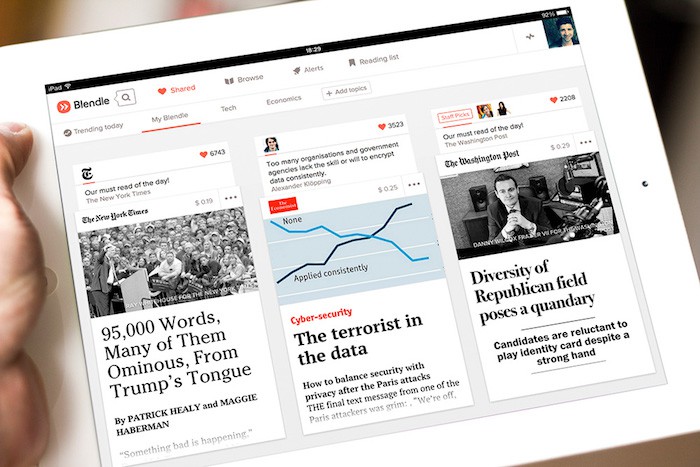
Blendle is coming to the United States.
The Dutch micropayment platform said Wednesday that it plans to launch a closed beta version of the site in the United States in early 2016, followed by a public launch a few months later. The company debuted in the Netherlands in the spring of 2014 before launching a German version this fall.Alexander Klöpping, the site’s cofounder, declined to specify when the American beta was launching. He also refused to disclose which U.S. publications joining the platform, citing publisher agreements.
However, a preview of the American site that Blendle included in a press release shows stories from The New York Times, The Washington Post, and The Economist. A number of English-language publications, including the Times, The Economist, The Wall Street Journal, and several Condé Nast magazines are already on the Dutch and German versions of the site.

“In the United States, we’ll first focus on national publications and maybe pilot with a few regional ones, but the focus will be national for now,” Klöpping told me. “Eventually, we want to do more of the regional newspapers…That would mean that your timeline could get filled with a few national newspapers based on your interests and some stories from your local newspaper. That’s part of the vision we have for the product.”
Participating publishers’ stories can be found on Blendle’s site and app, and users can then pay for individual articles, regardless of where they were initially published. Each outlet sets its own prices and receives 70 percent of the revenue, with Blendle taking the other 30 percent. In Germany and the Netherlands, articles are priced between 10 and 90 cents apiece, the company said. Users can also ask for a refund if they don’t like a story.
In October 2014, The New York Times Co. and Axel Springer invested €3 million in the company.Between the Netherlands and Germany, Blendle says it has about 550,000 registered users. When people first sign up, they get free credits to buy articles and test the service. But only about 20 percent of the users who have signed up have actually submitted credit card information and begun paying for articles, and Blendle won’t disclose how many articles have actually been purchased.
Blendle expects to hire around five people, based in New York, to run the American site.